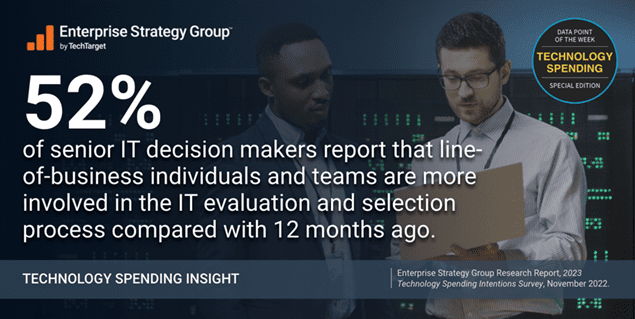Gone are the days when technology decisions rested with the IT department, but line-of-business managers are making their own choices regarding how to automate their department and processes. These decisions are increasingly a team effort and there are more people involved in the buying cycle, which naturally makes the processes longer and needing structure to justify the decision.
The recent ESG survey, concluded that global economics is also having a significant effect on spending and slowing down the buying cycle (albeit there is still an appetite for digital transformation).
However, the data is utterly contradictory when looking at Marketplace buying (such as AWS, Microsoft and GCP) where procurement is easier and migration funding is available to help remove barriers. Enterprise customers are committing to a cloud consumption rate to gain discounts and use the commitment to purchase “other solutions and services” and these sales cycles are shorter and the time to value is condensed for the buyer too.
Ironically, IT is back in charge as they hold the keys to the Cloud castle to procure quickly without necessarily undergoing individual vendor procurement approvals as it is being bought through an approved marketplace.
Unless you are buying through marketplaces (where IT managers are circumnavigating this longer and bumpy buying process), buying is taking longer but it is good to know that digital progression continues at a steady pace. 2023 Technology Spending Intentions Survey | Enterprise Strategy Group (esg-global.com)


